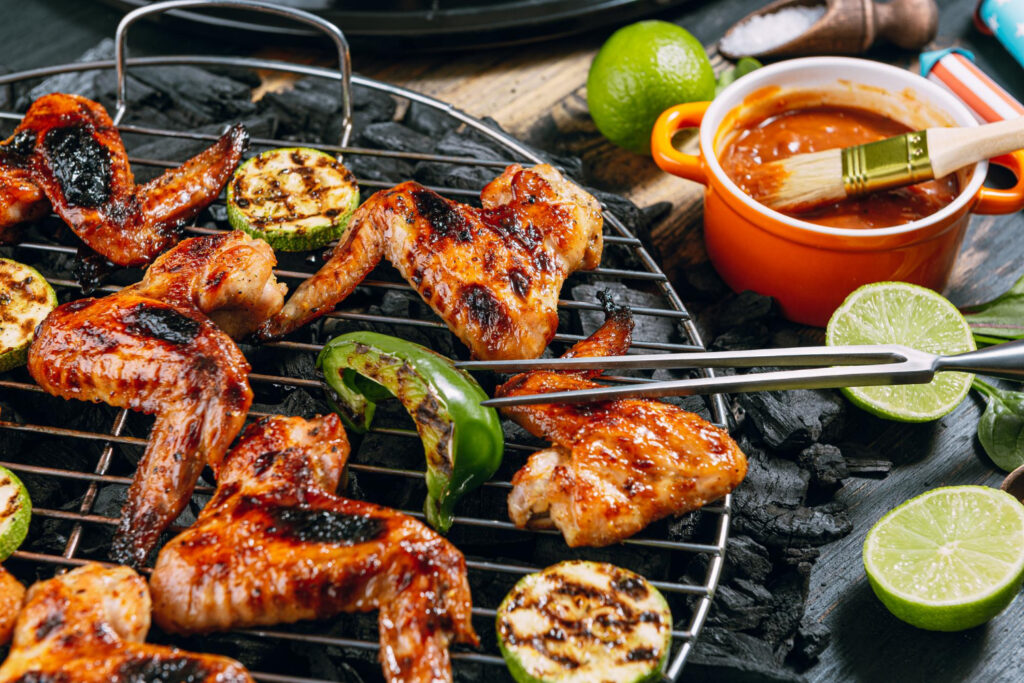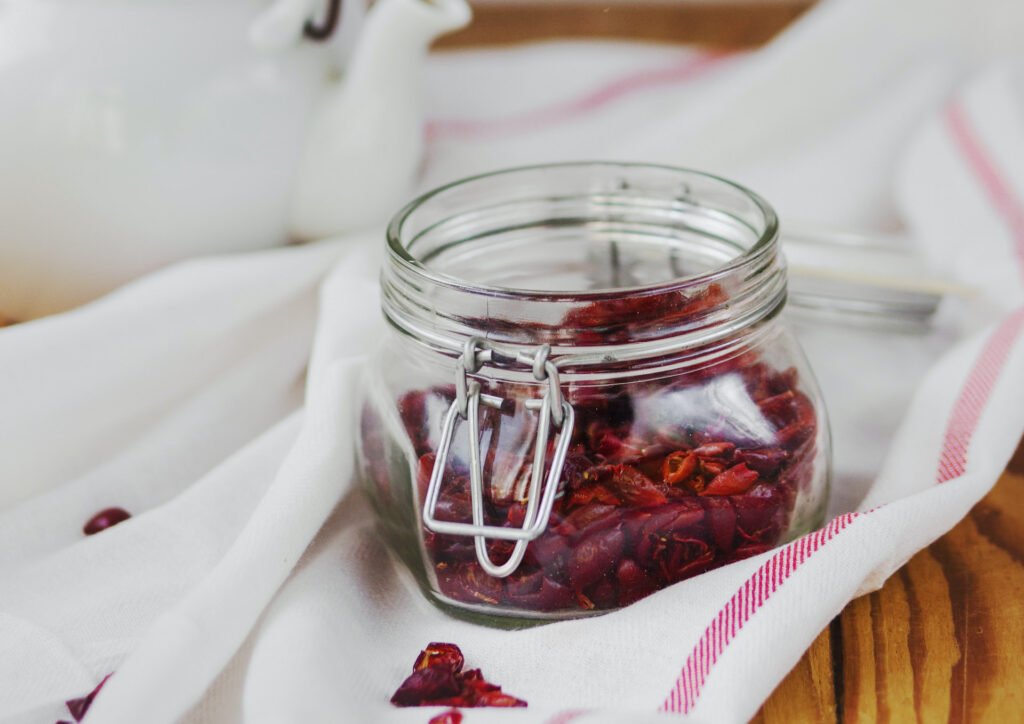If you’ve tried peri-peri chances are that you got hooked. It’s the sauce that keeps Mozambique, Ethiopia and South Africa running. Even when the politics go south, the sauce keeps getting poured and bringing people together for steaming hot meals by the braai (that’s South African for BBQ). Tourists who come for visits often leave with fond memories of the people they met around the braai and the sauce that went with it.
Peri-peri isn’t just a great sauce—it’s got an interesting history, too. Below you’ll find tales about the famous sauce and how it came into being. Oh, and the ingredients needed for making your own.
What Is Peri-Peri?
Peri-peri is a sauce made from chilli and other ingredients—popularly found on Nando’s world famous chicken. Chances are, if you live in Britain, you’ve tried something from the menu on Nando’s (you might even be secretly addicted to one of their spicy concoctions).
What’s in a Name?
Peri-peri sauce is often also referred to as piripiri or pili pili. Pilipili is the Swahili name for pepper.
The main ingredient in the sauce is a chilli which is also known as peri-peri or bird’s eye’s chilli. It’s a cultivar of capsicum frutescens from the malagueta pepper. Another popular cultivar exists in Asia.
It’s Getting Hot in Here
Bird’s eye chilli measures 50,000-175,000 Scoville heat units. You get the heat units by figuring out the concentration of capsaicinoids in the fruit. The main capsaicinoid is capsaicin—an ingredient used in the medical industry for its anti-inflammatory and analgesic properties. So yes, if you ever wondered—chilli has medicinal properties!
Compare the heat of bird’s eye chilli to the heat of a jalapeño pepper. The jalapeño pepper comes in around 2,500-10,000 on the Scoville scale.
American Origins
Chili originates in South and Central America and was brought to Europe by Spanish and Portuguese conquerers and sailors.
Columbus “discovered” America back in 1492. Of course, the real human discoverers of America were the Native Indians. And if we’re speaking of people from Europe discovering America, the vikings got there before Columbus. New studies show that vikings settled in Canada in 1021 AD.
While the vikings might have brought back a plant, or two to the Northern parts of Europe, it is indeed Columbus and the Spanish and Portuguese who followed him whom we can thank for things such as chilli and chocolate (an excellent combination). What Columbus and the other men did to America, on the other hand, is much less savoury (excuse the pun). However, one must bear in mind that they lived in an age of conquests—what was seen as noble then is seen as barbaric today.
Bird’s eye chilli was brought to Southern Africa by the Portuguese back in the 1500s, just like they brought it to India. Incredible to imagine these regions without chilli, isn’t it? Imagine India without the heat of the chilli pepper!
Of course, they made do with other spices in Africa and India before chilli came along, but there was less heat in the cooking all round. While spices like ginger can bring heat, black pepper was the name of the game back in the day—at least in Europe. Due to being the main spice bringing heat to food, it was labeled the “black gold” and cost thereafter. Needless to say, exporters and importers were making a lot of money from black pepper.
The Portuguese were a business minded lot—at least the ones bringing chilli to Southern Africa. By cultivating chilli in Mozambique, they could easily bring it to Asia without having to travel all the way back to Portugal.
While the Portuguese brought different chillis to Africa, the bird’s eye chilli adapted well to the climate and soon became a staple in local foods. It also started growing wild. And as people experimented, peri-peri sauce was born.
What’s in a Sauce?
Peri-peri sauce recipes vary from country to country, family to family. Think of them the way you would your grandma’s priced recipe for Christmas pudding or gingerbread cookies—the base ingredients remain the same worldwide, but your gran has her own special twist to it.
The basic ingredients in peri-peri sauce are:
• Bird’s eye chilli
• Lemon juice or vinegar
• Garlic
• Oil
• Salt
Some people add paprika, onions, bay leaves and other spices.
Now, the special trick to making the sauce taste like it came straight from Mozambique or South Africa is to use fermented bird’s eye chilli. You can ferment the sauce simply by putting together the ingredients and letting them ferment together in a glass jar (burping the jar as the fermentation occurs), or you can start by fermenting the chilli separately.
Fancy Dining, Braais and Pub Grub
Traditionally, per-peri sauce is used on chicken and prawns.
When it comes to chicken, you can marinate the chicken in peri-peri sauce, bast it in it, and use it as a sauce as you serve the food. Sometimes, all three are used for the same meal. Mozambicans and South Africans tend to keep peri-peri sauce close at hand for all occasions and apply it liberally—especially when braaing (BBQing).
Prawns, on the other hand, are often grilled after being marinated in peri-peri sauce and served in fancy seafood restaurants in South Africa and Mozambique.
Ryan Stewart, who owns the Mozambik chain in his native South Africa and also redesigned the menu at Peli Peli South African Kitchen in Houston recommends putting peri-peri in garlic lemon butter sauce used for seafood—particularly for prawns.
In London you’d likely raise your eyebrows if you saw chicken livers on the menu. In South Africa, not so much. There, peri-peri chicken livers are considered pub grub.
So, the South Africans have something in common with the Scots—they like intestines on the table.
Peri-Peri and Halal Meat
The most famous restaurant chain in the world serving peri-peri chicken is Nando’s. The chain has its humble beginnings in an apartheid torn Johannesburg in the 1980s.
Back then, halal meat was not big on the menus in South Africa—apartheid had prohibited private commercial slaughter, rendering halal meat unobtainable for many years. In the 1950s and 1960s the muslim resistance movement managed to get the government to agree to halal slaughter for one or two time slots per week. But as muslims weren’t even allowed into restaurants, there was little control where the meat was concerned.
When apartheid fell in 1994, the meat industry went largely halal—those who had been fighting for religious freedom for years jumped at the opportunity, and clever business men and women realised that they could earn an extra buck by offering halal products.
Over the years, South African halal meat became synonymous with quality—quite different from the story in other countries.
As a result, when Nando’s spread across the globe, it brought halal chicken with it. The South African chain soon became well-loved by spice lovers all over, and, in turn peri-peri sauce and halal chicken with it.
Our Story
Our story started when Malik traveled to Mozambique and, later, South Africa and discovered the famous peri-peri sauce. We’ll talk more about that in other blogs, but sufficient to say—we sell real peri-peri sauce made in South Africa. By real, we mean that the chillis used are grown, handpicked, and fermented, before being turned into peri-peri sauce right at the farm. Our peri-peri sauce comes straight from a South African farm to your table.


